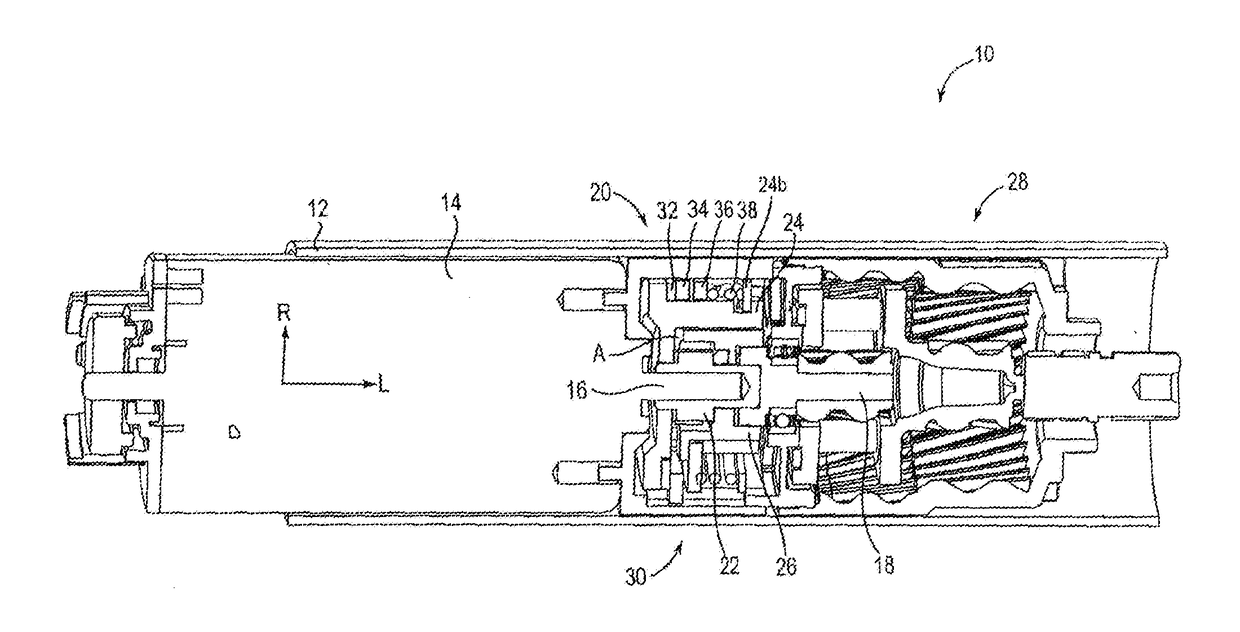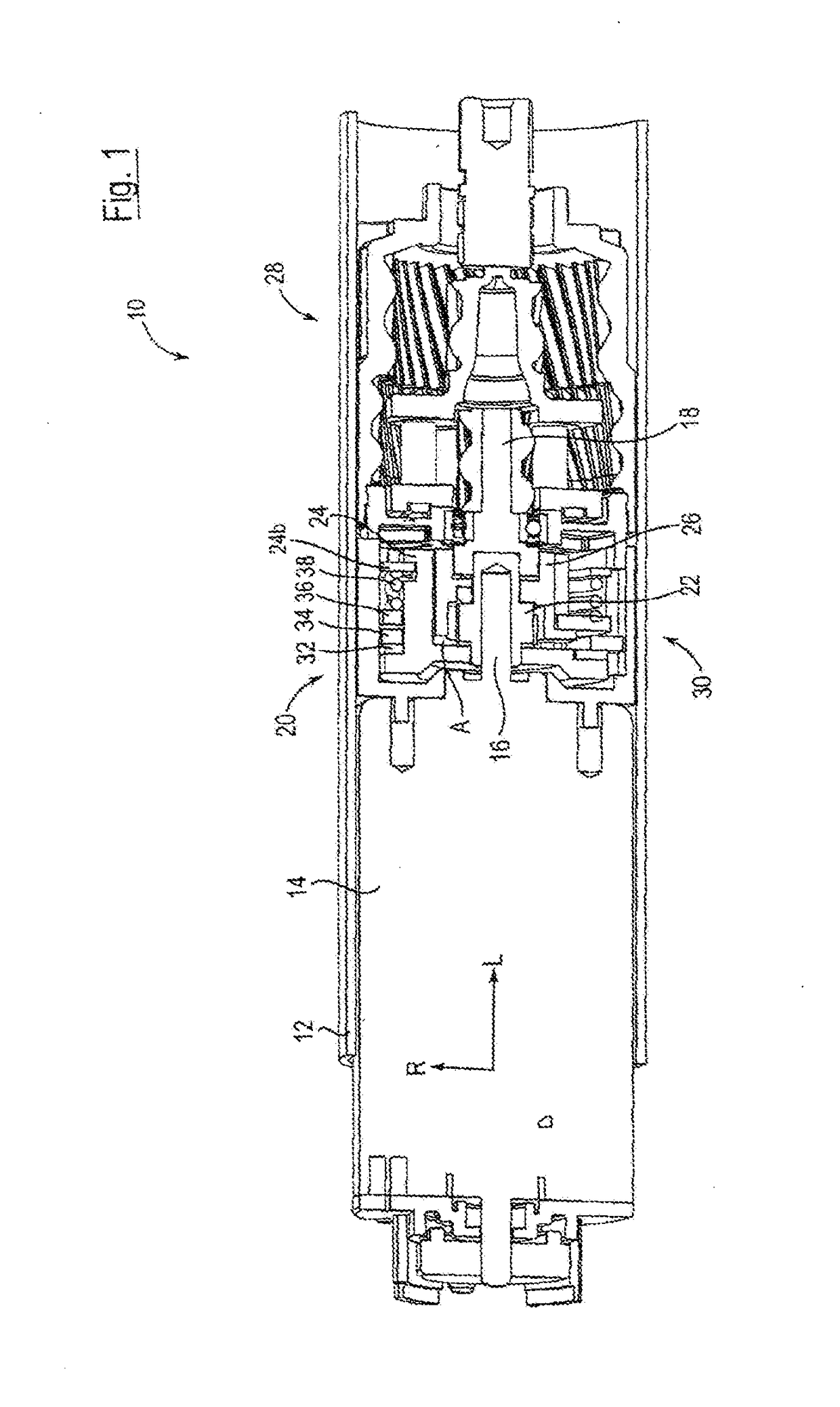Rotary drive device comprising load-dependent brakes
a technology of rotary drive and load-dependent brakes, which is applied in the direction of couplings, slip couplings, gearing, etc., can solve the problem of not having a mechanism which provides, and achieve the effect of preventing discontinuous braking characteristics and increasing impulses in the movement characteristics of the driven sha
- Summary
- Abstract
- Description
- Claims
- Application Information
AI Technical Summary
Benefits of technology
Problems solved by technology
Method used
Image
Examples
Embodiment Construction
[0027]In FIG. 1, an embodiment of a rotary drive device according to the invention is denoted very generally by the reference sign 10. It comprises a cylindrical housing element 12 having a radial direction R and a longitudinal direction L, which accommodates, in the interior thereof, a motor assembly 14, a drive shaft 16 which can be driven by the motor assembly, a driven shaft 18 and a transmission device 20 for transmitting a torque from the drive shaft 16 to the driven shaft 18. In this case, the motor assembly 14 is a known electrically operated rotary motor, in which, if desired, another gear-system unit can be provided between the motor 14 and the drive shaft 16.
[0028]On the drive shaft 16, a drive transmission element 22 is located which is attached for conjoint rotation and in a stationary manner, and, seen from the drive shaft 16, a support element 24 is located radially further out on said shaft, which support element is likewise connected to said shaft for conjoint rotat...
PUM
 Login to View More
Login to View More Abstract
Description
Claims
Application Information
 Login to View More
Login to View More - R&D
- Intellectual Property
- Life Sciences
- Materials
- Tech Scout
- Unparalleled Data Quality
- Higher Quality Content
- 60% Fewer Hallucinations
Browse by: Latest US Patents, China's latest patents, Technical Efficacy Thesaurus, Application Domain, Technology Topic, Popular Technical Reports.
© 2025 PatSnap. All rights reserved.Legal|Privacy policy|Modern Slavery Act Transparency Statement|Sitemap|About US| Contact US: help@patsnap.com



